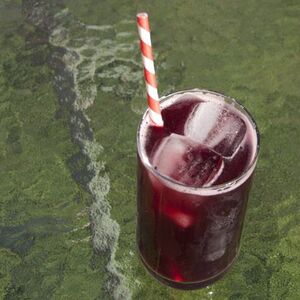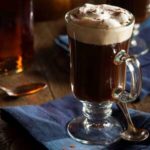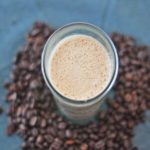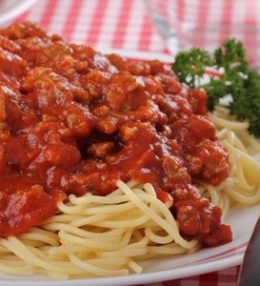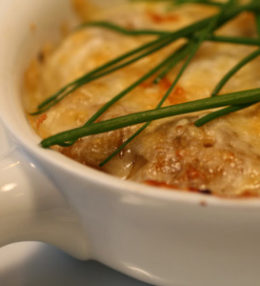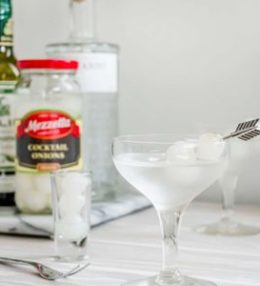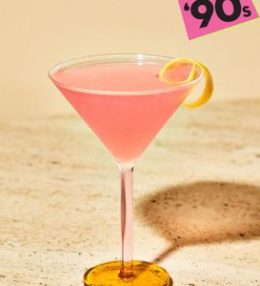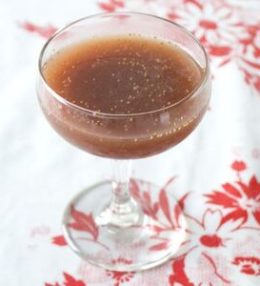
Why It Works
- Using real Concord grape juice makes your soda taste natural and bright.
- You can experiment with sweeteners and additional fruit juices to customize the flavor.
Most grape-flavored things don’t taste like grape at all—they taste like purple. Commercial grape soda walks the line between the taste of real grapes and sugary artificial flavor. Grape soda should be the non-alcoholic, fizzy sister to wine, but instead it seems to be the least appreciated of the sodas. I’ve had a soft spot for this deep purple, bubbly beverage since childhood, so I was inspired to make a DIY version that has a more natural flavor.
What’s Available to Buy?
My favorite commercial grape soda is Boylan, which has a hint of tartness that makes the grape taste more real. (It also ranked highly in the grape soda taste test.) Sunkist and Crush are the most widely distributed grape sodas. Sunkist is crisp with a bright grape flavor, while Crush is cloyingly sweet and thick. Neither one of them tastes like biting into a grape, but Sunkist comes the closest of the two big brands. Faygo and Stewart’s are also pretty widely available, but they taste more like candy than soda to me.
Why DIY?
If you like grape soda at all, making it at home is a must. You can use all-natural ingredients and still get a soda that’s bold in both color and flavor without a bunch of food coloring and corn syrup. The Champagne yeast, aside from providing carbonation, helps dry out the soda and add to the complexity of its flavor. I added lemon zest for a little pop, but you could experiment with other flavor boosters like mint, cinnamon, or other juices like raspberry and apple. This recipe was adapted from the one that appeared in Saveur.
I like the way agave syrup complements the sweetness of the grape juice, but you could easily use sugar or even stevia if you’re into that kind of thing. Fresh, homemade grape soda is ridiculously easy to make, and it costs about $3 to make 1.5 liters, which is more than what you’d pay for some of the larger brands but it’s on-par or cheaper than the smaller-batch options. In my mind, the little bit of extra cash is worth the true grape flavor and extra fizziness of the homemade kind.
Given the short fermentation time (the drink is refrigerated, halting fermentation, as soon as a desirable carbonation level is achieved), the final alcohol content is typically less than 1%.
Use It!
I mostly drink this soda on its own over ice, but sometimes I like to add a little bit of tonic water to give it a bitter edge. You can make a grape soda ice cream float or add a little milk or half and half to your soda for a creamy treat. For an easy cocktail, spike your soda with some vodka or gin, plus a few dashes of bitters.
-
3 cups Concord grape juice (see note)
-
2 1/2 cups filtered water
-
1/2 cup light agave nectar (see note)
-
1 tablespoon zest from 1 lemon (preferably Meyer lemon)
-
1/8 teaspoon Champagne yeast
-
Combine grape juice, water, agave nectar, and lemon zest in a large pot and bring to a boil over medium heat. Reduce to a bare simmer and cook for 30 minutes, stirring occasionally.
-
Let the mixture cool to room temperature, then strain out the lemon zest. Add the yeast and cover the pot with a kitchen cloth. Let sit for 24 hours.
-
Pour the liquid into a clean plastic soda bottle, leaving 1- to-2 inch space at the top. Put the cap on tightly and let rest at room temperature for 24 hours.
-
Open the bottle to check the carbonation, being careful to release the gas slowly to avoid explosion or overflowing. If you are happy with the amount of carbonation, put the closed bottle in the refrigerator for 24 hours before serving. Otherwise, reseal bottle and allow to continue to ferment until desired carbonation level is achieved. Keep refrigerated for up to 2 weeks.
Special Equipment
Microplane grater, fine-mesh strainer, funnel, plastic bottle with cap
Notes
You can juice Concord grapes for this recipe or buy 100% pure Concord grape juice. If you’d like to use sugar instead of agave nectar, use half as much by volume. If using an alternative sweetener such as stevia, consult the packaging to see how much to use, as it varies based on whether the sweetener is liquid, powdered, or mixed with other ingredients.
Champagne yeast (also called Prise de Mousse) can be found in most brew shops. You can order it online from The Beverage People. A 10-gram vial is enough to make gallons of soda.
Why It Works Using real Concord grape juice makes your soda taste natural and bright.You can experiment with sweeteners and additional fruit juices to customize the flavor. Most grape-flavored things don’t taste like grape at all—they taste like purple. Commercial grape soda walks the line between the taste of real grapes and sugary artificial flavor. Grape soda should be the non-alcoholic, fizzy sister to wine, but instead it seems to be the least appreciated of the sodas. I’ve had a soft spot for this deep purple, bubbly beverage since childhood, so I was inspired to make a DIY version that has a more natural flavor. What’s Available to Buy? My favorite commercial grape soda is Boylan, which has a hint of tartness that makes the grape taste more real. (It also ranked highly in the grape soda taste test.) Sunkist and Crush are the most widely distributed grape sodas. Sunkist is crisp with a bright grape flavor, while Crush is cloyingly sweet and thick. Neither one of them tastes like biting into a grape, but Sunkist comes the closest of the two big brands. Faygo and Stewart’s are also pretty widely available, but they taste more like candy than soda to me. Why DIY? If you like grape soda at all, making it at home is a must. You can use all-natural ingredients and still get a soda that’s bold in both color and flavor without a bunch of food coloring and corn syrup. The Champagne yeast, aside from providing carbonation, helps dry out the soda and add to the complexity of its flavor. I added lemon zest for a little pop, but you could experiment with other flavor boosters like mint, cinnamon, or other juices like raspberry and apple. This recipe was adapted from the one that appeared in Saveur. I like the way agave syrup complements the sweetness of the grape juice, but you could easily use sugar or even stevia if you’re into that kind of thing. Fresh, homemade grape soda is ridiculously easy to make, and it costs about $3 to make 1.5 liters, which is more than what you’d pay for some of the larger brands but it’s on-par or cheaper than the smaller-batch options. In my mind, the little bit of extra cash is worth the true grape flavor and extra fizziness of the homemade kind. Given the short fermentation time (the drink is refrigerated, halting fermentation, as soon as a desirable carbonation level is achieved), the final alcohol content is typically less than 1%. Use It! I mostly drink this soda on its own over ice, but sometimes I like to add a little bit of tonic water to give it a bitter edge. You can make a grape soda ice cream float or add a little milk or half and half to your soda for a creamy treat. For an easy cocktail, spike your soda with some vodka or gin, plus a few dashes of bitters. 3 cups Concord grape juice (see note) 2 1/2 cups filtered water 1/2 cup light agave nectar (see note) 1 tablespoon zest from 1 lemon (preferably Meyer lemon) 1/8 teaspoon Champagne yeast Combine grape juice, water, agave nectar, and lemon zest in a large pot and bring to a boil over medium heat. Reduce to a bare simmer and cook for 30 minutes, stirring occasionally. Let the mixture cool to room temperature, then strain out the lemon zest. Add the yeast and cover the pot with a kitchen cloth. Let sit for 24 hours. Pour the liquid into a clean plastic soda bottle, leaving 1- to-2 inch space at the top. Put the cap on tightly and let rest at room temperature for 24 hours. Open the bottle to check the carbonation, being careful to release the gas slowly to avoid explosion or overflowing. If you are happy with the amount of carbonation, put the closed bottle in the refrigerator for 24 hours before serving. Otherwise, reseal bottle and allow to continue to ferment until desired carbonation level is achieved. Keep refrigerated for up to 2 weeks. Special Equipment Microplane grater, fine-mesh strainer, funnel, plastic bottle with cap Notes You can juice Concord grapes for this recipe or buy 100% pure Concord grape juice. If you’d like to use sugar instead of agave nectar, use half as much by volume. If using an alternative sweetener such as stevia, consult the packaging to see how much to use, as it varies based on whether the sweetener is liquid, powdered, or mixed with other ingredients. Champagne yeast (also called Prise de Mousse) can be found in most brew shops. You can order it online from The Beverage People. A 10-gram vial is enough to make gallons of soda.
DIY Grape Soda Recipe


